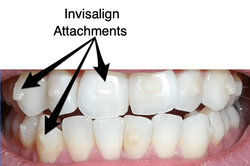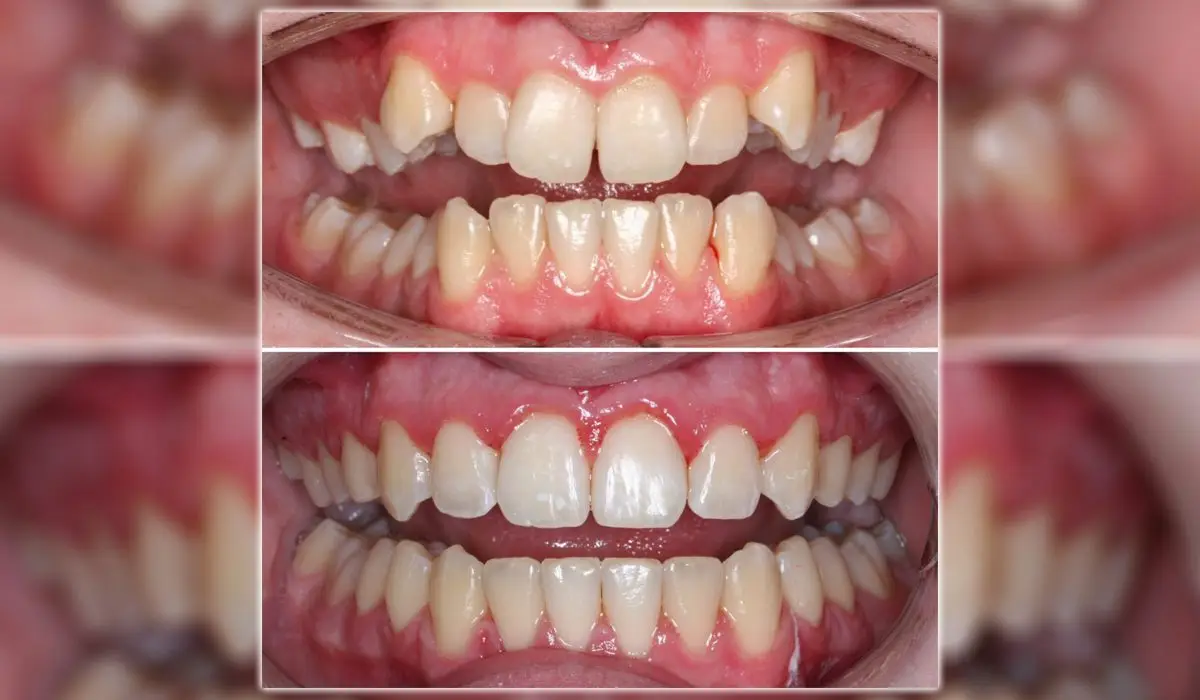Invisalign for Teenagers: A Modern Solution to Straightening Young Smiles
Invisalign for Teenagers: A Modern Solution to Straightening Young Smiles
Blog Article
Invisalign vs. Conventional Braces: Which Alternative Is Right for You?
When considering orthodontic treatment, the option between Invisalign and standard braces provides a number of vital elements that warrant cautious evaluation. Invisalign supplies a discreet choice with detachable aligners, while standard dental braces offer a more visible yet effective remedy for severe imbalance. Each option incorporates distinct benefits and drawbacks connected to aesthetic appeals, comfort, therapy duration, and expense. Comprehending these subtleties is vital for making an informed decision that straightens with your individual choices and way of life. The question continues to be: which option will best fulfill your orthodontic needs and expectations?
Overview of Treatment Options

On the other hand, standard braces are composed of steel braces and cables that are bound to the teeth. This approach uses constant stress gradually to accomplish positioning. While reliable for complicated orthodontic issues, conventional dental braces need routine check outs for modifications and can position obstacles in maintaining oral hygiene due to the problem of cleaning about cords and brackets.
Both choices have their values, and the choice frequently rests on details dental problems, way of life choices, and patient conformity. Ultimately, getting in touch with an orthodontic professional is important for establishing the most suitable therapy plan customized to private demands. Comprehending the nuances of each choice can significantly influence the total success of orthodontic therapy.
Aesthetic Considerations
A significant aspect influencing the selection in between Invisalign and traditional braces is the visual charm each therapy offers. Invisalign aligners are crafted from clear plastic, making them virtually invisible when worn.
In comparison, typical braces include steel brackets and cables, which can be more visible. While advancements in orthodontic modern technology have resulted in the growth of smaller sized brackets and tinted elastics, conventional dental braces still keep a more conspicuous profile. For some people, the visibility of dental braces might discourage them from looking for essential treatment.
Eventually, the selection between Invisalign and standard dental braces might hinge on individual preferences concerning aesthetics. Individuals who focus on discretion usually favor Invisalign, while those who are less concerned concerning visibility might choose for traditional braces. Comprehending the visual implications of each alternative is critical for making an informed decision that aligns with one's way of life and choices.
Comfort and Convenience

In regards to comfort, Invisalign aligners are detachable, making it possible for patients to enjoy their preferred foods without limitation and maintain optimum dental hygiene. Cleaning and flossing are simplified, as the aligners can be obtained during these routines, whereas conventional braces call for careful navigating around brackets and cords.
In contrast, typical braces require routine changes, making them much less practical for those with hectic routines. In general, the convenience and ease of Invisalign make it an appealing selection for many individuals looking for orthodontic treatment.
Treatment Duration and Effectiveness
While both Invisalign and conventional dental braces work in correcting dental misalignments, the duration of therapy can vary considerably in between the two options. Usually, Invisalign therapy can take anywhere from 12 to 18 months, relying on the intricacy of the case. The clear aligners work by slowly moving teeth into their wanted positions, and routine follow-ups with an orthodontist assistance guarantee progress remains on course.
On the other hand, standard dental braces frequently require a longer commitment, usually varying from 18 months to three years. This is because of their set nature and the usage of cords and braces, which can be a lot more reliable for serious misalignments and complicated situations (Invisalign). The therapy efficiency of conventional dental braces is well-documented, as they permit exact modifications and greater her comment is here control over tooth activity
Inevitably, the option between Invisalign and typical braces may depend upon both the anticipated treatment duration and the details dental concerns at hand. Consulting with an orthodontist is critical, as they can provide customized suggestions based upon individual needs, ensuring the chosen technique aligns with preferred end results and durations.
Price Comparison and Insurance Coverage Alternatives
Price plays a considerable duty in the decision-making process for people considering orthodontic treatment, whether deciding for Invisalign or typical braces. On standard, the price of Invisalign varieties from $3,000 to $8,000, while typical braces normally set you back in between $2,000 and $6,000. Variables affecting these expenses consist of the complexity of the case, the duration of therapy, and geographical place.
Insurance protection can considerably affect out-of-pocket costs. Several dental insurance plans supply partial coverage for orthodontic treatments, however the specifics can vary commonly. It is important for patients to assess their insurance coverage to figure out the degree of protection for either option. Usually, conventional dental braces might be much more regularly covered by insurance coverage strategies contrasted to Invisalign, which some insurance firms categorize as a cosmetic procedure.
Additionally, a number of orthodontic practices provide flexible settlement plans, making both therapy alternatives a lot more accessible. Individuals must ask about potential financing choices and price cuts for upfront settlements. Assessing the complete price, including insurance policy advantages and settlement plans, is essential for making a notified decision that aligns with both aesthetic preferences and spending plan considerations.

Conclusion
In recap, the option in between Invisalign and conventional dental braces depends upon several variables, including visual choices, comfort, treatment period, and cost. Invisalign offers a discreet, removable option that assists in dental health and dietary flexibility, while standard Discover More dental braces may be better for complex dental concerns and commonly come at a lower price factor. Inevitably, examination with an orthodontist is necessary to examine specific conditions and identify one of the most proper therapy alternative for achieving optimum oral placement.
When considering orthodontic therapy, the option in between Invisalign and typical dental braces presents several vital factors that merit careful evaluation.Comparing Invisalign and traditional dental braces discloses unique therapy options for orthodontic improvement.While both Invisalign and standard braces are effective in dealing with oral imbalances, the duration of treatment can differ dramatically in between the 2 options.Price plays a significant function in the decision-making process for people taking into consideration orthodontic treatment, whether deciding for Invisalign or traditional dental braces.In recap, the go to these guys selection in between Invisalign and conventional braces pivots on multiple variables, consisting of visual choices, comfort, therapy duration, and cost.
Report this page